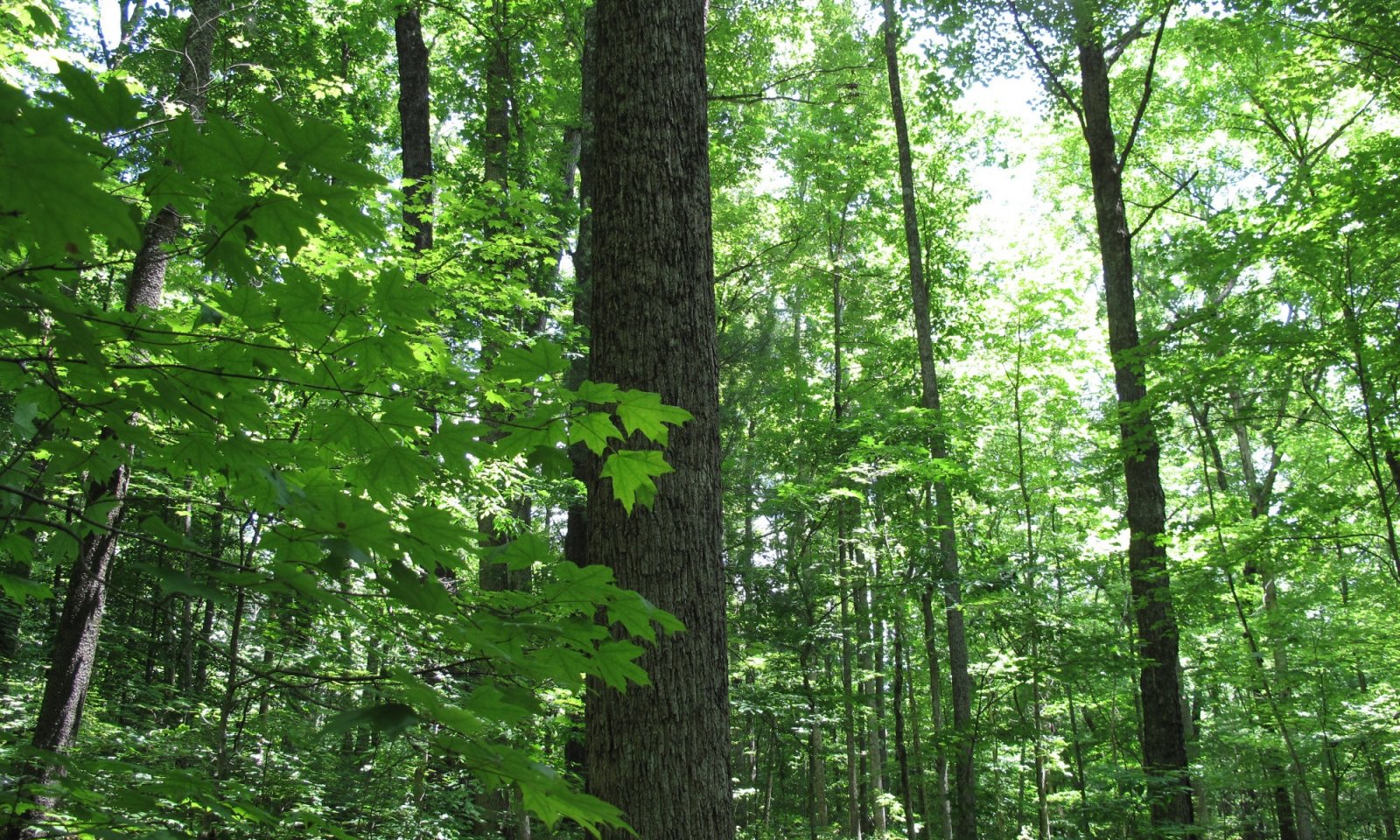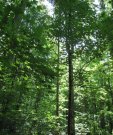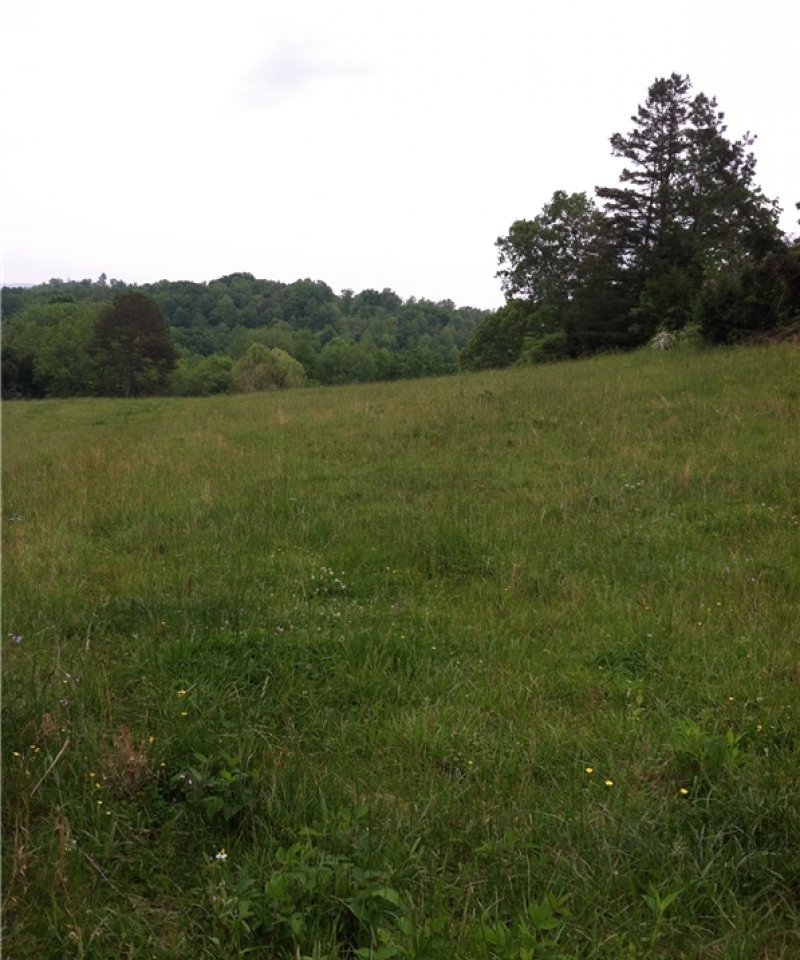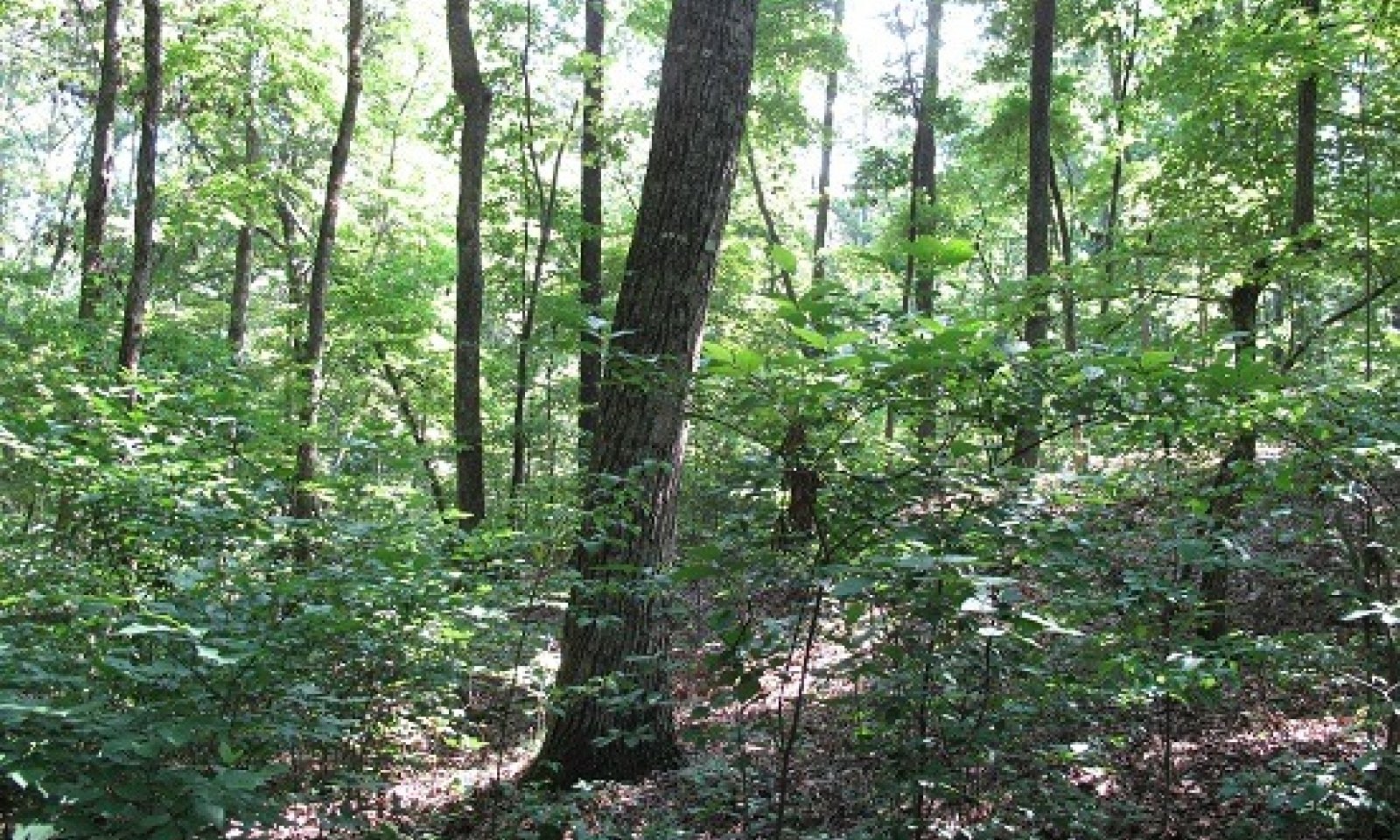
Thermic Very Deep Clayey Non-Cherty Limestone and Dolomite Residuum White Oak (Quercus alba)/Black Oak (Quercus velutina)
Scenario model
Current ecosystem state
Select a state
Management practices/drivers
Select a transition or restoration pathway
- Transition T1A More details
- Transition T1B More details
- Restoration pathway R2A More details
- Transition T2A More details
- Restoration pathway R3A More details
-
No transition or restoration pathway between the selected states has been described
Target ecosystem state
Select a state
State 1
Naturalized State - Upland Mixed Hardwood



Description
The naturalized state for this ecological site is characterized by a closed-canopy hardwood forest dominated by oaks. Yellow poplar may be more common on these sites than on similar drier sites, indicating that fragment content is related to soil moisture. Yellow poplar would be more competitive on sites with more available moisture while white oak, for example, would likely do better on drier sites.
In order for this state to be maintained, the mixed hardwood species, especially oaks, must be present in multiple age classes. In most cases red maple, sugar maple and American beech are colonizing the midstory and understory. A species composition shift toward these more mesophytic species is widely recognized throughout the eastern United States (McEwan et al., 2011).
Submodel
Description
Forests in the high graded state have been logged using diameter-limit cut methods multiple times in most cases. This results in a stand with undesirable species composition, low vigor, and poor health. The genetic quality of the forest has been depleted due to the best trees being taken out over time.
While oak and hickory species are often still present in this state, individual trees are often "wolfy" and defective. These are the trees that would have been undesirable from a timber perspective and so left after multiple entries of logging. Notably, hickory has often been left because sawmills historically did not have the capability to process them.
Submodel
State 3
Cleared Grassland State




Description
This state represents a once-forested area now cleared for pasture. Most pastures are very old and have been established for a long time. Management practices focus primarily on maintaining healthy pasture conditions rather than new pasture establishment, although that is certainly an option. Balancing stocking rates, grazing rotation, and nutrient inputs are the primary management concerns.
Pastures in good condition fall into the MDWRV (G128XY021TN) forage suitability group (FSG) in Tennessee. Forage species rated as excellent for this site include the legumes alfalfa, ladino clover, and red clover. Cool season grasses rated as excellent include annual ryegrass, orchardgrass, tall fescue, timothy, and winter small grains. Warm season grasses rated as excellent include bermudagrass, big bluestem, caucasian bluestem, eastern gamagrass, indiangrass, little bluestem, switchgrass, pear millet and sorghum sudangrass. Some species listed as excellent were not included in this description because they are known to have invasive tendencies and should be avoided if possible.
In general, pasture management recommendations focus on maximizing desirable forage species to outcompete undesirable or weedy species. Production practices that result in overgrazing and low fertility levels favor emergence, propagation, and growth of weeds (Green et al., 2006). Effective pasture management includes the following practices:
- maintaining proper soil pH and fertility levels
- using controlled grazing practices
- mowing at proper timing and stage of maturity
- allowing new seedlings to become well established before use, and
- renovating pastures when needed (Green et al. 2006).
Perilla (Perilla frutescens) mint is an exotic, invasive weed that has become a major problem in many pastures. It causes more cattle deaths (in Tennessee) than any other toxic plant (Steckel and Rhodes, 2007). Keeping a ready supply of quality feed available for farm animals in the late summer and early fall will help to minimize the risk to livestock. Cattle will not normally feed on perilla unless there is a shortage of other feed.
Submodel
Mechanism
Selective harvesting and high grading multiple times results in degradation of forest stand quality in terms of altered species composition, forest structure, and genetic fitness. Diameter limit cuts, incorrectly implemented, remove the biggest and best trees and leave those of lowest quality in terms of both timber and ecology.
Mechanism
Forest clearing, herbicide application, and establishment of pasture plants, hay or crops will convert forested stands to a grassland state. Most pastures in this site are old and were converted many years ago.
Restoration pathway R2A


Mechanism
Restoration practices to be implemented should be determined strictly on a stand-by-stand basis as conditions may vary depending on the type and extent of past logging practices or wind/ice/fire damage as well as the presence or absence of invasive non-native plants. In general, a large scale disturbance such as a clear-cut would allow stand re-establishment over time. In some cases, planting desirable species (primarily oaks) could be merited. If planting is determined to be a viable option, competition control and protection from deer browse is important. Improved tree stock is recommended for the best results. Further management practices such as weed control, timber stand improvement (TSI) and thinning would likely be needed intermittently during stand re-establishment to achieve the desired result.
Mechanism
Forest clearing, herbicide application, and establishment of pasture plants, hay or crops will convert forested stands to a grassland state. Most pastures in this site are old and were converted many years ago.
Restoration pathway R3A


Mechanism
Abandoned pastures can revert back to forest naturally, although the presence of invaisve, non-native plants may prevent desirable species establishment. In the past, most of this ecological site has been cleared and grazed and then abandoned but invasive plants were not as prolific then. It is almost certain that some type of weed control will be needed in addition to the natural regeneration process. Additionally, planting desirable species can sometimes be merited. If this approach is attempted, improved tree planting stock, competition control and prevention of deer browse is recommended. Sites may need multiple treatments over time and monitoring is critical to successful restoration.
Model keys
Briefcase
Add ecological sites and Major Land Resource Areas to your briefcase by clicking on the briefcase (![]() ) icon wherever it occurs. Drag and drop items to reorder. Cookies are used to store briefcase items between browsing sessions. Because of this, the number of items that can be added to your briefcase is limited, and briefcase items added on one device and browser cannot be accessed from another device or browser. Users who do not wish to place cookies on their devices should not use the briefcase tool. Briefcase cookies serve no other purpose than described here and are deleted whenever browsing history is cleared.
) icon wherever it occurs. Drag and drop items to reorder. Cookies are used to store briefcase items between browsing sessions. Because of this, the number of items that can be added to your briefcase is limited, and briefcase items added on one device and browser cannot be accessed from another device or browser. Users who do not wish to place cookies on their devices should not use the briefcase tool. Briefcase cookies serve no other purpose than described here and are deleted whenever browsing history is cleared.
Ecological sites
Major Land Resource Areas
The Ecosystem Dynamics Interpretive Tool is an information system framework developed by the USDA-ARS Jornada Experimental Range, USDA Natural Resources Conservation Service, and New Mexico State University.
